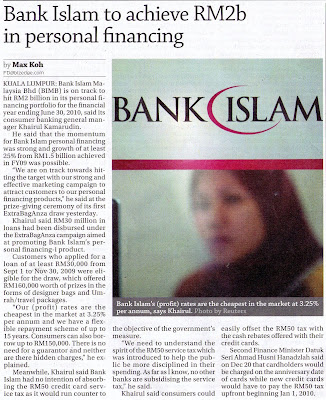Published in Sunday People, New Sunday Times
6 December 2009
Fluid portraits
MAX KOH
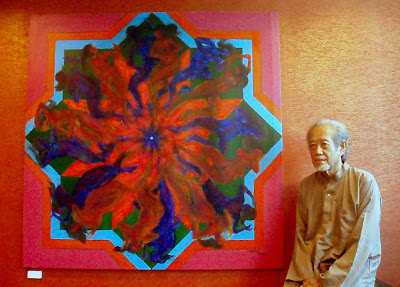 Yeoh and his painting Rasa Leela, which depicts eight Gopis (cowherd maidens) dancing for the cowherd-god, Krishna, in the cosmic dance of lifeART in Asia has been heavily influenced by themes of spirituality for ages, and this is explored at an exhibition, writes MAX KOH
Yeoh and his painting Rasa Leela, which depicts eight Gopis (cowherd maidens) dancing for the cowherd-god, Krishna, in the cosmic dance of lifeART in Asia has been heavily influenced by themes of spirituality for ages, and this is explored at an exhibition, writes MAX KOHTHE Temple of Fine Arts in Brickfields is now chockful with sculptures and paintings celebrating Lord Krishna. It’s an exhibition called Rasa Leela which features works by celebrated artist Yeoh Jin Leng and dancer-artist Sarasa Krishnan.
One is a sage-like veteran whose works are renowned and is a cultural ambassador for Unesco. The other, a relatively new artist whose works are heavily influenced by her experience as a dancer, for which she is better known.
At the interview on the fourth floor of this year-old building, Yeoh, garbed in a biege dhoti, commands my rapt attention as he espouses the differences between Asian and Western art sensibilities. “You’ll find that Western art has a materialistic outlook on reality, while Asian art relates to a deeper consciousness in relation to aesthetics.”
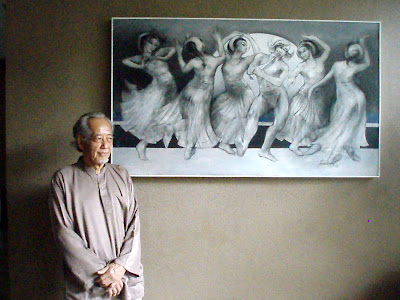 Yeoh and his black-and-white painting, Dance of the Gopis
Yeoh and his black-and-white painting, Dance of the GopisYeoh trained as a teacher at Kirkby and went on to the Chelsea School of Art and Courtauld Institute in London in the 50s. He began exhibiting his works in 1963 and his paintings are in collections around the world, including the national Art Gallery. His artistic career is clearly paralleled by the vocation of teaching, both students and other teachers, and in promoting art, which has been recognised by numerous awards.
For some 15 years, he began to explore the spiritual themes that influence Asian art as a whole.
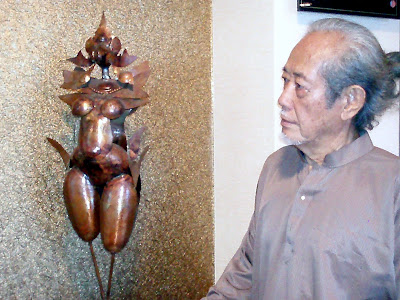 Yeoh and his sculpture Apsara on display at the Temple of Fine Arts, Brickfields
Yeoh and his sculpture Apsara on display at the Temple of Fine Arts, BrickfieldsHis study of cosmological and aesthetic foundations of Asian art brought him to visit cities, as well as obscure tribes in Egypt, Nepal, Iran, China, Indo-China and India. “Over the last five years, I was able to consolidate some ideas I had,” he says. “I explored the spirituality that influences Asian art by visiting Southern India.
“I visited the major temples in Chennai. I observed sculptures and murals, explored the history and read quite a bit of the Sanskrit epics, Mahabharata and Vedas.
“I spent a month in Orissa, where I could compare the sculptural, artistic and architectural traditions.” It was only three years later that Yeoh began to paint, inspired by his observations. One of the works displayed at TFA is Rasa Leela, which depicts eight Gopis (cowherd maidens) dancing for the cowherd-god Krishna, in the cosmic dance of life.
Another is the black-and-white Dance Of The Gopis, which captures the expressive movements of the dancers. All his works are a personal exposition of the different rasa (feelings) that is evoked. Also on show are Teoh’s copper sculptures that explore this theme.
While Yeoh’s approach is a personal exposition on the theme, Sarasa’s works are borne out of her love for Lord Krishna. “My paintings are an outpouring of my love for Krishna. I paint according to what I feel inside,” explains the soft-spoken, petite Sarasa.
Sarasa has been a dancer for more than 30 years and her paintings reflect the two disciplines. “What I paint comes from a very emotional level. I interact emotionally with colours and I explore the various poses and movements in my paintings,” says Sarasa, the artistic director of TFA in Perth.
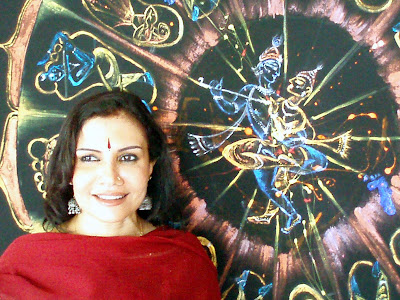
Vishnu Paadam by Sarasa depicts the cosmic dance of Krishna
One of her pieces, Vishnu Paadam, depicts the cosmic dance of Krishna while the intense Blue Flute shows the calm and joyous visage of Krishna playing his flute. Sarasa uses a lot of bright colours in her paintings and the liberal use of lines depicts a lot of movement. Her paintings are inspired by the teachings of TFA founder Swamiji Shantanand Saraswathi and kathak maestro Pandit Birju Maharaj who taught her to dance in that discipline.
Birju is currently conducting kathak workshops at TFA Brickfields.
Sarasa says she started painting as a child but was “discovered” in Paris only in 2002. A friend asked her to place her paintings as the stage backdrop for Sarasa’s dance performance. A Parisian gallery owner noticed them and invited her to show her works. Soon her paintings were shown in Florence, New York, India and Perth. Sarasa danced and painted Shakti — The Eternal Energy, at the Edinburgh Fringe Festival in last year.
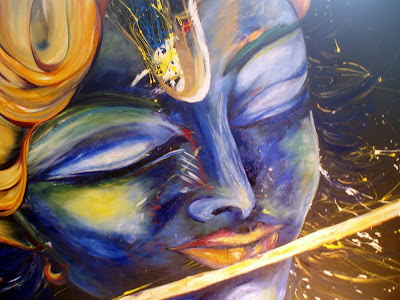 Blue Flute shows the calm and joyous visage of Krishna playing his flute
Blue Flute shows the calm and joyous visage of Krishna playing his fluteThat riveting performance with Umesh Shetty was reported in Sunday People. It stood out from the rest of the events on the festival calendar.
Sarasa says she spent three weeks of 18-hour days painting the works for Rasa Leela. There are 16 paintings on display on Krishna and Ganesha. Each painting is accompanied by poems that are translated or inspired by sacred Hindu texts. “All I did was dance, sleep and paint. The sense of peace and joy that I felt during those moments are reflected here in the paintings.
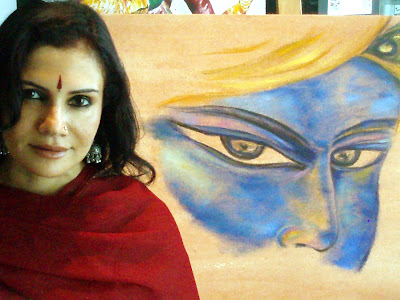 Sarasa's Blue Eyes shows the passionate gaze of Krishna
Sarasa's Blue Eyes shows the passionate gaze of Krishna “Krishna is different to each of us. That’s why Krishna’s features vary from painting to painting. The only thing that is constant is the eyes.”
